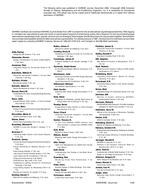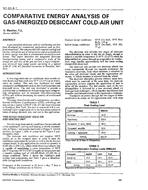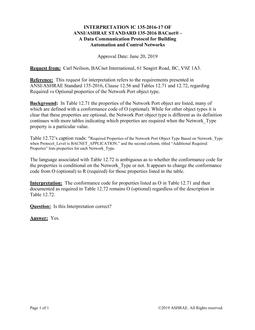Unstable flows with relatively low mean air velocity and very high turbulence intensity have been found in laboratories, operating rooms, airplane passenger cabins, trains, and buses. The flow is probably created by low Reynolds number jet, thermal buoyancy generated from occupants, and/or separations caused by a large quantity of furniture in such spaces. This type of flows is difficult to model using available turbulence models based on the Navier-Stokes equations. This ASHRAE research project studied the complex features of such flows, and developed a new turbulence model to predict correctly the unstable flows.
The investigation was first to study experimentally how low velocity and high turbulence were generated. The experiment measured mean velocity and turbulence level in a 8 ft x 8 ft x 8 ft model room, which represents a section of a half of a two-isle airliner cabin. The measurements were for (1) isothermal forced convection from a ceiling jet in the empty model room; (2) isothermal forced convection from a ceiling jet in the model room with a box that represents furniture; and (3) mixed convection from a cool ceiling jet in the model room with a heated box that represents furniture and occupants. The experimental data shows that the inlet jet generated a high turbulence level in the room. The wall had a strong damping effect on the turbulence in the room air. A box that simulated furniture in the room acted as an obstacle and can decrease the velocity and turbulence levels in the room air due to its wall damping effect. The buoyancy generated from the heated box enhanced the air recirculation thus the velocity and turbulence levels.
The second part of this research was to evaluate eight popular turbulence models for such complex flows by the experimental data. The models include six Reynolds-Averaged Navier Stokes (RANS) equation models, one Large Eddy Simulation (LES) model, and one Detached Eddy Simulation (DES) model. By comparing the data of the three experimental cases with the computed results from these turbulence models, this study found that the RNG k-e and RSM models had a good performance among the six RANS models tested, but their accuracy suffered as the flow became more complex. The LES model was the best among all the models tested. The performance of the DES model was stable.
The final part of this investigation was to further develop a DES model, the semi-v2f/LES model. By solving the transport equation for k and , and an algebraic equation for v‘ 2 , the model calculates the turbulence viscosity in the RANS region and subgrid-scale turbulence viscosity in the LES region. The semi-v2f/LES model was validated by the experimental data from the three cases and from the literature. The new model performed better than the other models for predicting the turbulence and temperature. The semi-v2f/LES model is recommended for indoor airflows at transitional Reynolds number.
Units: Dual
Product Details
- Published:
- 2009
- Number of Pages:
- 124
- File Size:
- 1 file , 5.6 MB
- Product Code(s):
- D-RP-1271


